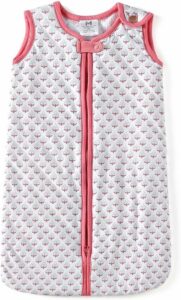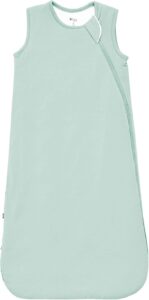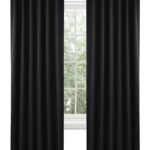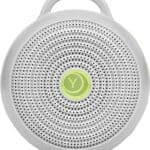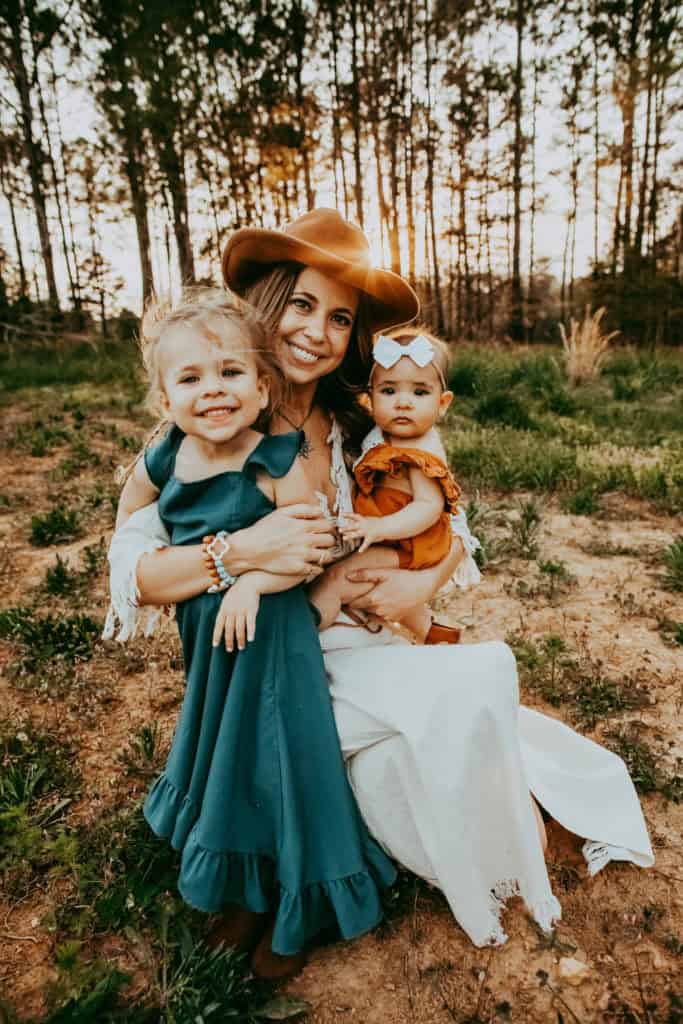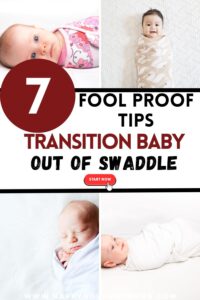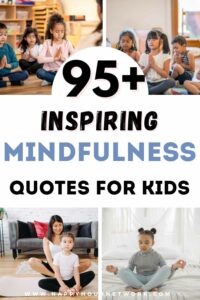When it comes to your baby’s sleep, understanding TOG Baby Sleep ratings is key to ensuring a comfortable and safe sleep environment. Whether you’re a first-time parent or adding a new chapter to your growing family, sleep quality can be a constant challenge. As babies grow, their sleep needs and habits change, and so do the products designed to support them.
Understanding TOG Baby Sleep Ratings: A Guide for First-Time Parents
This guide will help you navigate the world of TOG-rated sleepwear, from tog baby sleep sacks and wearable blankets to finding the right thermal insulation for colder and warmer temperatures. You’ll also discover expert advice on managing your baby’s body temperature, especially during the winter months and warmer seasons.
*This post includes affiliate links, which means if you make a purchase through one of these links, I earn a small commission at no extra cost to you. This helps me keep providing high-quality content on this site for free. Rest assured, I only recommend products that I would personally use and believe will be helpful for my readers.
What Is a TOG Baby Sleep Rating and Why Does It Matter?
TOG stands for thermal overall grade, a unit of measurement used to indicate the warmth provided by a wearable blanket or tog sleep sack. A higher TOG rating means better insulation and warmth, making it ideal for colder climates. Conversely, a lower tog rating is designed for warmer rooms or climates, providing the right balance of comfort and safety. The goal is to create the most comfortable sleep environment for your baby, helping to regulate their body temperature as they rest.
The American Academy of Pediatrics recommends creating a safer sleeping environment by selecting tog baby sleep bags based on your baby’s room temperature. This helps to minimize the risk of SIDS while ensuring your baby is neither too hot nor too cold.
TOG, or Thermal Overall Grade, is a standardized measurement used to indicate the insulation and warmth a particular piece of fabric provides. The higher the TOG rating, the warmer the item will keep your baby. This system is particularly useful when it comes to baby sleep sacks, helping parents choose the right sleepwear based on room temperature and seasonal changes.
For new parents, understanding TOG baby sleep is essential to ensure that their baby is neither too hot nor too cold during sleep. Babies cannot regulate their body temperatures as efficiently as adults, so finding the right TOG baby sleep sack is key to creating a safe and comfortable sleep environment.
TOG Baby Sleep ratings typically range from 0.2 (for the lightest fabric) to 3.5 (for heavy, winter-ready garments). Higher TOG ratings are ideal for colder months, while lower TOG ratings work best for warmer temperatures or when using heavier bedding.
TOG Ratings Breakdown:
- 0.2 – 0.5 TOG: Lightweight, perfect for summer or warmer climates.
- 1.0 – 1.5 TOG: All-season sleep sacks that provide moderate warmth.
- 2.5 TOG: Great for fall or cooler climates where extra warmth is needed.
- 3.5 TOG: Best suited for winter months and rooms that are consistently cold.
Ensuring your baby is comfortable and warm, without overheating, is one of the first steps to establishing healthy sleep habits and a safe sleep foundation.
Choosing the Right TOG Sleep Sack for the Seasons
Whether it’s winter months or the heat of summer, the right sleep sack makes all the difference. For the colder months, you’ll want a higher tog rating sleep sack to provide extra warmth, much like wearing an extra blanket. Look for options with thermal insulation that can keep your baby cozy in cooler temperatures. A kyte baby sleep bag made from organic cotton or linen fabrics is an excellent choice for colder climates, as these materials are both breathable and insulating.
For warmer weather, a lower tog rating is the better choice. Babies tend to overheat in warmer rooms, so sleep sacks with a lower tog rating ensure they stay cool and comfortable. Brands like Malabar Baby Sleep Sacks and Kyte Baby Sleep Bags offer high-quality YKK zippers and breathable fabrics like viscose fabric that are ideal for these climates. New arrivals in the market, especially those with timeless designs, ensure that first-time parents have plenty of stylish and functional options.
Choosing the right TOG rating for your baby’s sleep sack largely depends on the ambient temperature of the room. Here’s a useful chart to help guide your decision-making:
| Room Temperature (°C) | Recommended TOG Rating | Clothing to Pair |
|---|---|---|
| 24°C and above | 0.2 – 0.5 TOG | Short-sleeve onesie |
| 21°C – 23°C | 1.0 TOG | Long-sleeve onesie |
| 18°C – 20°C | 2.5 TOG | Long-sleeve onesie + pajamas |
| Below 18°C | 3.5 TOG | Long-sleeve onesie + pajamas + hat |
Case Study: How TOG Baby Sleep Sacks Improved Baby Sleep
Emma, a new parent, found that her baby was frequently waking up in the middle of the night, seemingly uncomfortable. After consulting with a certified pediatric sleep consultant, Emma realized her baby was overheating due to too many layers and the room temperature being too high. She switched to a 1.0 TOG sleep sack during the summer months, paired with a short-sleeve onesie. Within a week, her baby was sleeping more soundly through the entire night, a testament to the importance of choosing the correct TOG rating.
How Body Temperature Affects Baby Sleep
Babies are highly sensitive to their surroundings, especially when it comes to maintaining a stable body temperature during sleep. The thermal resistance of a unit area in your baby’s sleepwear plays a significant role in ensuring that they sleep soundly throughout the night. A tog baby sleep sack with the correct thermal insulation can prevent your baby from waking up due to being too hot or too cold.
During the warmer months, it’s essential to keep your baby’s room at the ideal temperature. A short-sleeve onesie paired with a lower tog rating tog baby sleep bag is perfect for summer nights, helping your baby maintain a comfortable temperature. Conversely, in the winter months, adding layers like a one-piece sleeper or choosing a tog sleeping bag with a higher tog rating will help retain body heat, ensuring your baby stays warm without the need for extra blankets.
Best Materials for Baby Sleepwear
When selecting the right sleepwear, the fabric plays a key role in ensuring both safety and comfort. Bci-certified cotton, organic cotton, and linen fabrics are popular choices for baby sleepwear, as they offer both breathable fabric and a comfortable temperature for your baby. These fabrics also make easy diaper changes possible, as they’re soft on baby’s skin and less likely to cause irritation.
For colder nights, a tog sleep sack made from thicker fabric with a higher tog rating provides more warmth, while lighter materials like viscose fabric or one-piece sleepers are ideal for warmer nights. Whether you’re shopping for gift sets or just looking for practical sleepwear, the choice of fabric should always prioritize safety and comfort.
Organic Cotton vs. Synthetic Fabrics
- Organic Cotton: Hypoallergenic, breathable, and soft against a baby’s sensitive skin.
- Synthetic Fabrics: Tend to trap heat, which can lead to overheating.
According to the American Academy of Pediatrics, choosing breathable fabrics, such as cotton, can contribute to creating the most comfortable sleep environment for your baby, helping them maintain a safe and consistent body temperature.
Statistics: Organic vs. Synthetic
- A study by the Journal of Pediatrics found that babies sleeping in breathable fabrics like organic cotton had 15% fewer wake-ups compared to those in synthetic fabrics.
As a new parent, ensuring your baby’s safety during sleep can be overwhelming, but following expert guidelines can significantly reduce the risk of sleep-related issues. The American Academy of Pediatrics (AAP) recommends creating a sleep environment that is conducive to healthy sleep and reduces the risk of Sudden Infant Death Syndrome (SIDS).
One of the primary recommendations is that babies should sleep on their backs, on a firm mattress, and in their own crib or bassinet. Loose blankets, pillows, and stuffed animals should be avoided as they increase the risk of suffocation. TOG-rated sleep sacks are an excellent alternative to traditional blankets, as they provide warmth without the risks associated with loose bedding.
Key Safe Sleep Guidelines:
- Back to sleep: Always place your baby on their back to sleep.
- Room-sharing without bed-sharing: Share a room with your baby, but have them sleep in their own crib or bassinet.
- Firm sleep surface: Use a firm mattress with a fitted sheet in a crib that meets current safety standards.
- Avoid overheating: Over-bundling your baby can lead to overheating, which is a known risk factor for SIDS.
By using a TOG sleep sack based on the room temperature, you can minimize the risk of overheating while keeping your baby cozy. Babies dressed in TOG-rated sleepwear tend to sleep more comfortably through the entire night because they are neither too hot nor too cold.
Expert Advice from Pediatric Sleep Consultants
If you’re struggling with your baby’s sleep patterns or have concerns about whether your sleep sack choices are correct, consulting a pediatric sleep consultant can be highly beneficial. Pediatric sleep consultants provide expert medical advice on creating a healthy sleep routine that aligns with your baby’s developmental stage. They often suggest using tog baby sleep sacks tailored to your baby’s needs, ensuring that your child is comfortable and safe throughout the entire night.
As your baby grows into a newborn baby or toddler, sleep challenges may arise. These experts guide you every step of the way, from setting up a proper sleep routine to ensuring that your baby’s room has the right sleeping environment. Products like the wildbird maternity pillow and walker sleep bags are often recommended by these consultants for first-time parents.
The Importance of Safe Sleep
Ensuring safe sleep is one of the most important things for new parents. The American Academy of Pediatrics stresses that babies should sleep on their backs, in a crib free from loose blankets or pillows, and in a temperature-controlled room. A tog sleeping bag or swaddle blanket with the right thermal insulation can help maintain a safer sleeping environment while minimizing the risks of overheating or cold exposure.
Brands like Kyte Baby Sleep Sacks and Malabar Baby Handmade Sleep Sacks offer award-winning sleep sack designs, crafted with beautiful designs and superior safety features like the high-quality YKK zipper and supportive baby carriers. These products make sleep safer while maintaining baby’s comfort, allowing parents to rest easy knowing their child is in a comfortable temperature.
Choosing the right TOG baby sleep sack can make a significant difference in your baby’s sleep quality and safety. By understanding TOG ratings and how they relate to room temperature, you can create an optimal sleep environment that supports your baby’s healthy sleep foundation. Whether you’re navigating the cold winter months or the heat of summer, TOG sleep sacks offer a safe, comfortable, and practical solution for both first-time parents and seasoned caregivers alike.
As always, if you have concerns about your baby’s sleep, consult a certified pediatric sleep consultant for
Frequently Asked Questions for TOG Baby Sleep
- What is a TOG rating, and why is it important for baby sleep?A TOG rating measures the warmth provided by a tog sleep sack or blanket. It helps parents select the right sleepwear for their baby’s room temperature, ensuring a comfortable temperature for safe sleep.
- What TOG rating should I choose for the summer months? For warmer climates or warmer temperatures, a lower tog rating is recommended. Look for tog sleep sacks made from breathable materials like viscose fabric or organic cotton.
- Is a higher TOG rating necessary for winter? Yes, during colder temperatures, a higher tog rating provides more warmth, especially if your home is colder or lacks adequate heating.
- What fabrics are best for baby sleepwear? Bci-certified cotton, organic cotton, and linen fabrics are ideal for baby sleepwear due to their breathability and softness. These materials help regulate body temperature and reduce irritation on baby’s skin.
- Can a TOG-rated sleep sack prevent SIDS? While no product can completely prevent SIDS, using a tog sleep sack can minimize the risk of overheating or suffocation, as recommended by the American Academy of Pediatrics.
- How do I know if my baby is too hot or too cold? If your baby is too hot, they may appear flushed or sweaty. Cold babies may have cold hands or feet. It’s best to check their body temperature by feeling the back of their neck.
- What TOG rating should I use in the summer? During summer or in warmer climates, a 0.2 – 0.5 TOG sleep sack is ideal. Pair it with light clothing like a short-sleeve onesie or just a diaper.
- Are TOG sleep sacks safe for newborns? Yes, TOG sleep sacks are designed to provide warmth without the risks associated with loose blankets, making them safe for newborns.
- How can I tell if the room temperature is right for my baby? A good rule of thumb is to keep the room between 16°C and 20°C. Use a room thermometer to maintain a consistent temperature.
- Can I layer blankets with a TOG sleep sack? It’s best to avoid using additional blankets with a TOG sleep sack, as it may lead to overheating. Instead, select the appropriate TOG rating based on room temperature.
Creating the Optimal Sleep Environment
1. Use Blackout Curtains
One of the simplest ways to improve your baby’s sleep is by controlling external light. Blackout curtains block out bright light and help your baby understand that it’s time to rest. This is particularly useful during daytime naps or early mornings when the sun may rise too early for your baby’s sleep schedule.
2. Incorporate a White Noise Machine
Light isn’t the only environmental factor affecting sleep. Noise can also disrupt your baby’s rest. A white noise machine helps to mask sudden sounds, such as household noise or traffic, allowing your baby to stay asleep longer and more deeply. Pair this with a soft light or dim red light to create a peaceful and sleep-friendly atmosphere.
3. Maintain a Calm Nighttime Routine
A consistent bedtime routine that includes dimming the lights, swaddling, and quiet activities can help signal to your baby that it’s time to wind down. This routine should also incorporate reducing artificial light exposure at least 30 minutes before bed to promote natural melatonin production.
Choosing the right TOG baby sleep sack can make a significant difference in your baby’s sleep quality and safety. By understanding TOG ratings and how they relate to room temperature, you can create an optimal sleep environment that supports your baby’s healthy sleep foundation. Whether you’re navigating the cold winter months or the heat of summer, TOG sleep sacks offer a safe, comfortable, and practical solution for both first-time parents and seasoned caregivers alike.
As always, if you have concerns about your baby’s sleep, consult a certified pediatric sleep consultant.



